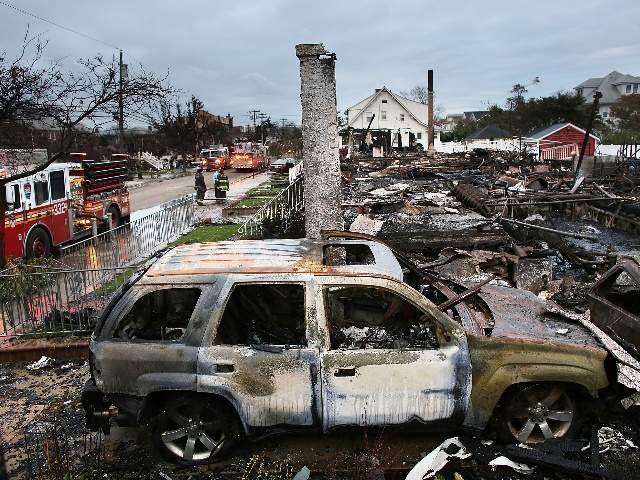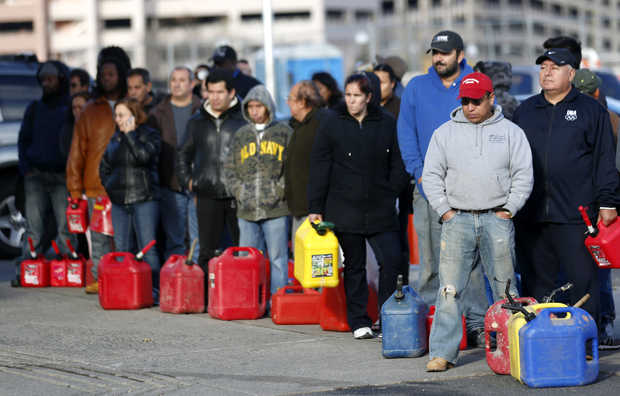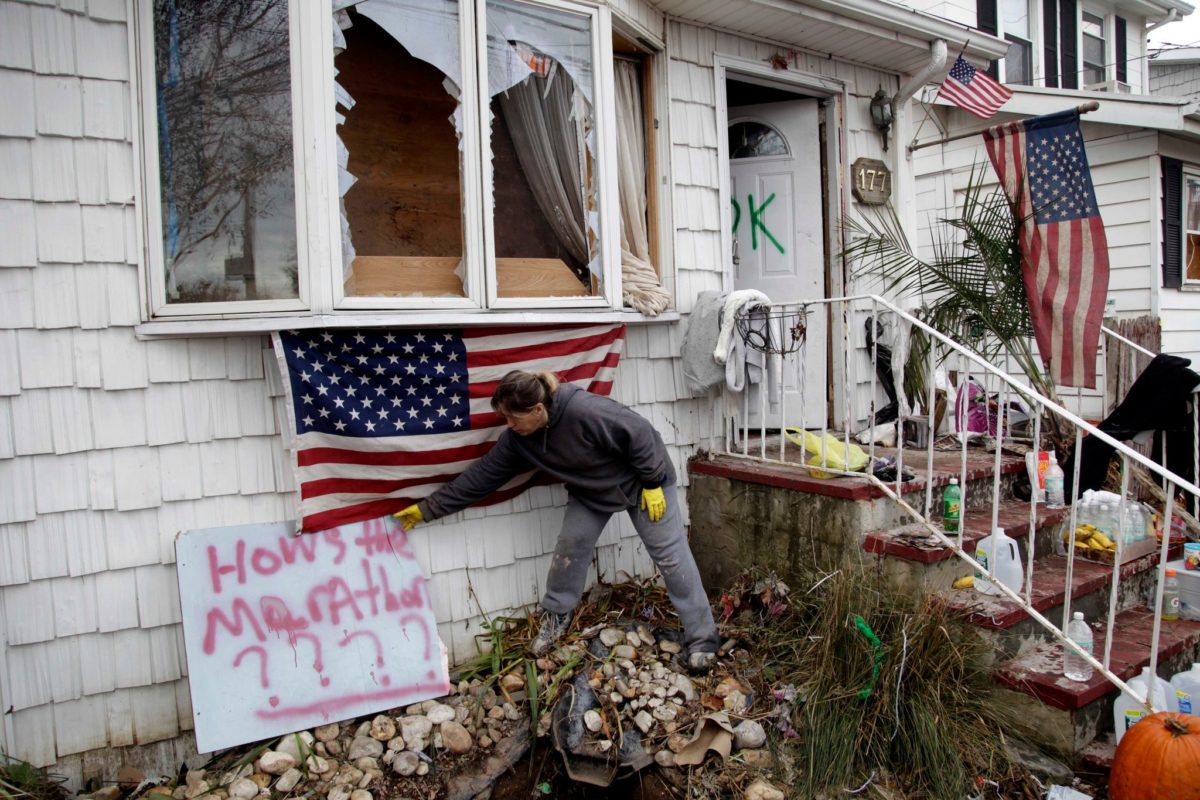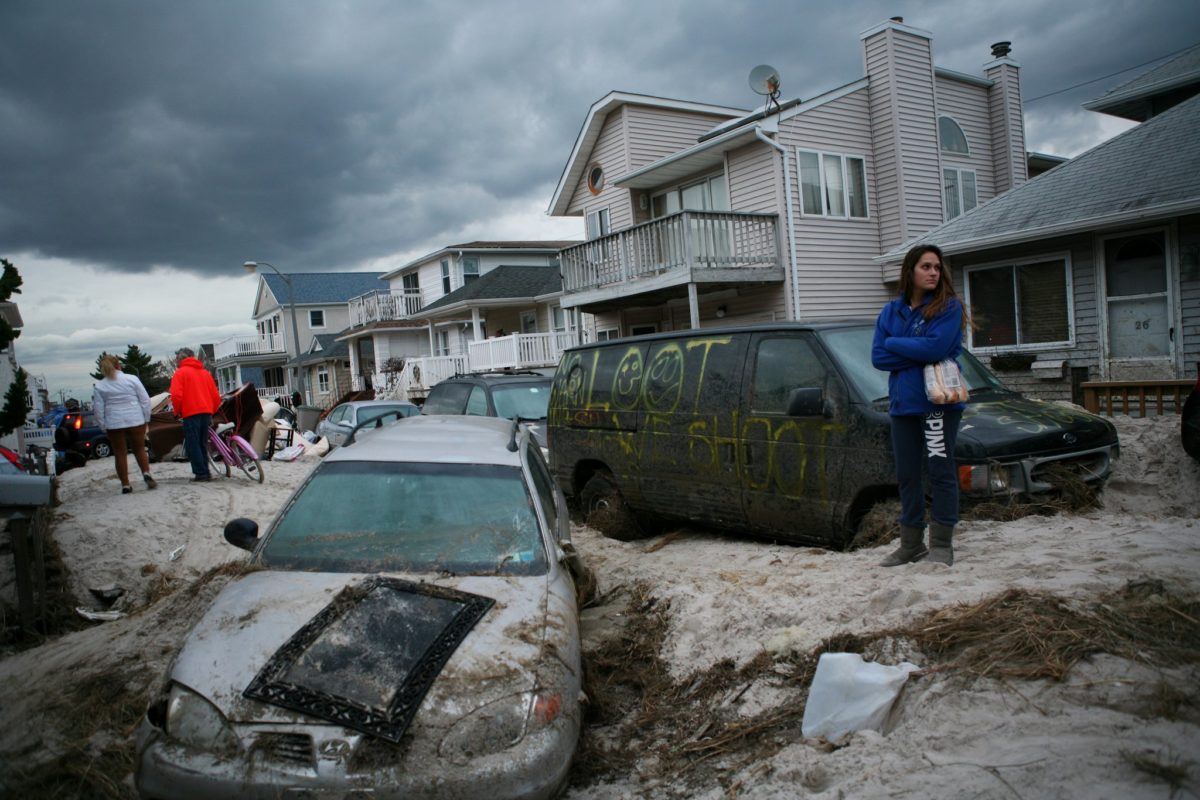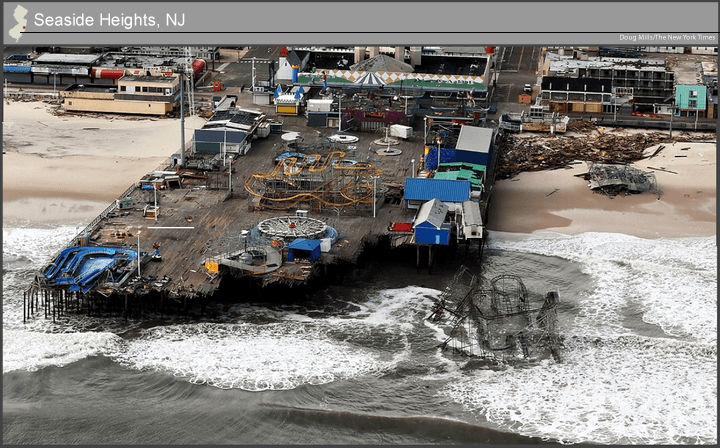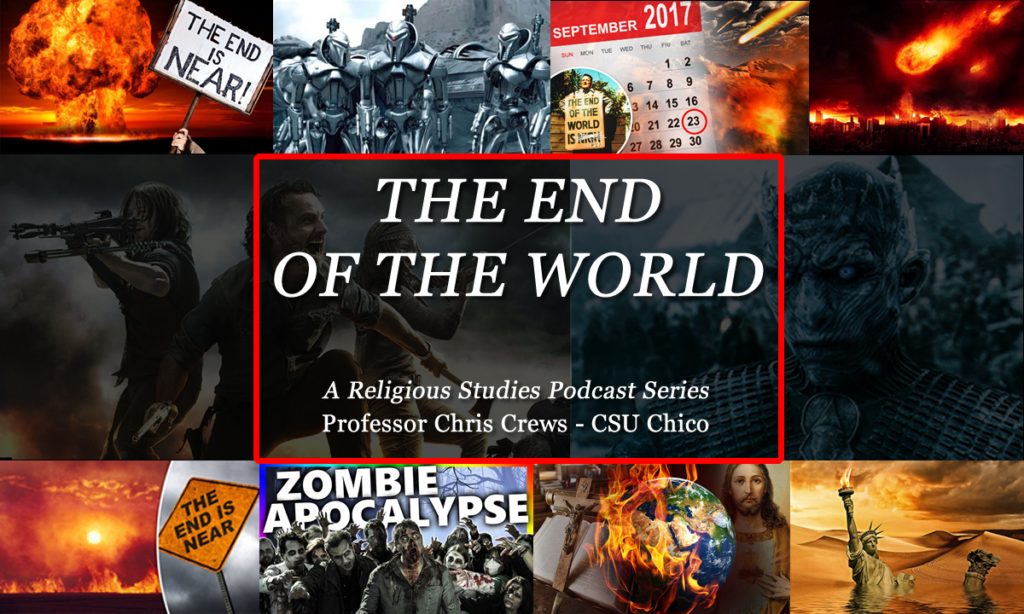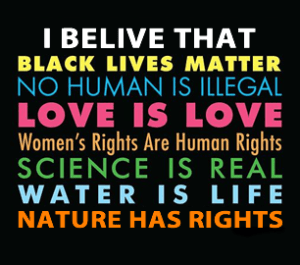Anthropocene Omens: Is Hurricane Sandy Our Future?
Now that we’re almost a week past Hurricane Sandy having made landfall along the East Coast, and slamming us here in New York, we’re finally starting to get a picture of the full extent of the damages, and perhaps more importantly, a sense of just how unprepared we were for a natural event of this magnitude. It’s clear from reviewing the evidence that New York is not, and perhaps will never be, prepared to deal with a storm of this magnitude. That’s bad news for a major metropolitan coastal city, and with all projections around climate change related weather showing trends of bigger, badder and more frequent storms likely in the future, Hurricane Sandy may be an omen of things to come in this new Anthropocene world.
I have seen notes or updates from quite a few friends here in the city who just got access or power restored last night or this afternoon, and there are hundreds of thousands of New York and Jersey residents still waiting for help.
Starting before dawn on Friday, long lines of cars snaked around gasoline stations in scenes reminiscent of the energy shortage of the 1970s. Some of the lines stretched for miles…New Jersey Governor Chris Christie ordered gas rationing in 12 counties to begin on Saturday.
“It’s a catastrophe,” said Anthony Ennab, a 21-year-old student, as he waited in line at a Staten Island gas station with a container. “If I had an emergency, I would have no gas.”
In other parts of New York, reports are still coming in of no power or water and of restless neighborhoods, as reflected in some of the continued reporting from around NY and NJ:
Perhaps more so than in any other place in the city, the loss of power for people living in public housing projects forced a return to a primal existence. Opened fire hydrants became community wells. Sleep-and-wake cycles were timed to sunsets and sunrises. People huddled for warmth around lighted gas stoves as if they were roaring fires. Darkness became menacing, a thing to be feared…
On Long Island, there was a profound sense of isolation, with whole towns cut off from basic information, supplies and electricity — and people in washed-out neighborhoods saying the felt increasingly desperate. “I just keep waiting for someone with a megaphone and a car to just tell us what to do,” said Vikki Quinn, standing amid a pile of ruined belongings strewn in front of her flooded house in Long Beach. “I’m lost.”
What these reports don’t necessarily convey, but I think these picture (above, below) from Long Island captures quite well, is the mix of frustration, confusion and shock that was left in the wake of Hurricane Sandy. The latest estimates I’ve seen put the number of deaths at around 100 so far, although this number may increase as some of the hardest hit areas along the coast are still sorting out the full impacts.
One of the clearest examples of this feeling I came across was in a livestream update from Donald D’Avanzo, who lives along Rockaway Beach and was reporting from the area during most of the storm and its aftermath. In a post several days ago he wrote:
(10/31/12) UPDATE – Rockaway Beach New York – Cell Service Patchy
Hello everyone. I first wanted to thank all of you for your warm wished and support. I wanted you all to know that the cellular service infrastructure throughout New York City is several damaged. Service comes and goes but transfer rate is not sufficient enough and/or stable to broadcast outbound to you. Service when available is just barely able to transmit texts and small photo upload. Now I have one major request to you….a favor. The mainstream media has basically been ignoring or not informed of how severe the damage below Beach 108th street is! Your mission if you choose to accept it…..help us local residents been seen…..and not forgotten about…..make our voices heard! Tell my story….radio, tv etc is covering and reporting everywhere around us but are not telling the story of devastation of Broad Channel and Rockaway Beach below Beach 108th Street! The world needs to know we are as bad as everyone else….. Tell our story as I shared it to you live…..
For those not familiar with the area, Beach 108th in Rockaway Beach I have marked it below on the map, giving you a sense of where he is talking about in relation to the rest of the area and the coast. This area took the full brunt of Hurricane Sandy as she made landfall and send massive waves surging north and west into NY and NJ.
Reuters reported this morning that initial damage estimates are already over $70 billion in the aftermath of Hurricane Sandy, and this number is only going to continue growing in the coming weeks.
Disaster modeling company Eqecat estimated Sandy caused up to $20 billion in insured losses and $50 billion in economic losses, double its previous forecast. At the high end of the range, Sandy would rank as the fourth costliest U.S. catastrophe, according to the Insurance Information Institute, behind Hurricane Katrina in 2005, the Sept. 11, 2001, attacks and Hurricane Andrew in 1992.
But Sandy left more than just economic impact behind in her wake. She also left signs of the dynamic natural force that is a tropical hurricane. Notice here what were normal coastal process in the past, the growth and eroding of coastal beaches, dunes and inlets from storm surge and hurricane force winds, are being described as if these are somehow new and unnatural processes. For example, how else can we understand the claim that the “storm’s furious flood tide created new inlets that could become permanent parts of the topography“? Why is the natural process of coastal erosion and growth suddenly a mysterious and unnatural process?
The authorities estimated that as many as 100,000 homes and businesses on Long Island had been destroyed or badly damaged in the storm, from bedroom communities in Nassau County to the leafy towns of the South Shoreto Long Island’s notable summer refuges — Fire Island, the Hamptons, Jones Beach —which were decimated by the storm. Sand dunes were flattened and whole rows of beach houses crushed. The storm’s furious flood tide created new inlets that could become permanent parts of the topography.
This of course raises a tricky question: are we responsible for the scale and power of Hurricane Sandy? It’s a question that a lot of people have been asking in the wake of its landfall. Of course, climate deniers were the first to reject any such possible link. While the ecological factors are quite complex in a storm like this, and there is a minimal change of saying that Sandy was definitively caused by climate change, what we do know is that human actions are making these storms worse, as Andrew Revkin pointed out in a recent Dot earth post:
While scientists and campaigners debate what mix of factors shaped this epic storm, what’s indisputable is that much of the disaster that unfolded as it came ashore was the result of human actions and decisions — ranging from where we’ve chosen to build or subsidize development to how seriously our governments take the need to build with the worst in mind…This post is truncated by the troubles I’m having getting online in a blacked-out part of the Hudson Valley, but I want at least to start a discussion of the prime question of the moment: What are the political, economic, societal and personal traits that caused one of the world’s wealthiest and most sophisticated cities to end up (despite longstanding warnings) with flooded tunnels, subways and neighborhoods and widespread flood-triggered loss of electricity?
Serious reflection on this question may lead us to answers that we would prefer not to have to consider, especially for those who took Sandy’s full force along the Atlantic coast and are still recovering. And here is where the sad reality of contemporary environmental politics at the global scale becomes most clear. American exceptionalism and the political power of Big Carbon are impotent in the face of a “Frankenstorm,” and no amount of climate denial or conservative chest thumping will change that cold, hard ecologic fact. Every person going to the polls on Tuesday should remember that when they vote for the future direction of US politics.
Part of the reason that many people viewed the storm as so destructive, not counting the actual direct impacts like losing your home or business or a family member, which are all extremely serious, is because it severed the two critical resources which New Yorkers and the rest of America can’t do without: power and transportation. As the length and depth of these two resource gaps grew deeper, the level of public panic increased. Although we may not like to admit it, the implicit message is clear. Losing electricity and transportation (esp. cars) causes social and economic disruption on a cataclysmic level.
We’re just starting to see the real impacts of that now here in NY and in Jersey as people stand in line for hours, or in some cases even longer, in order to fill up a gas can or two with gas. Things have gotten so bad that the NYPD and NJPD have been posted at gas stations to intervene, and several incidents have already been reported. The Department of Homeland Security and the Department of Defense have all been mobilized to help with relief efforts, especially trying to get gasoline and diesel fuel to gas stations and New York ports. Obama even waived the usual restrictions on foreign tankers coming up the East Coast in order to deliver gas.
The only real upside I’ve seen from the storm was a Financial Times article noting that the pinnacle of American cultural excess and depravity, Jersey Shore, was a sacrificial offering to Hurricane Sandy. Is this Snooki’s karma coming back to haunt here? I’ll leave that for the readers to decide.
Sandy Swallows ‘Jersey Shore’ Town
Until next time… when you see a massive tropical hurricane coming at you, don’t just watch, prepare!
###
